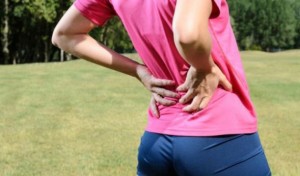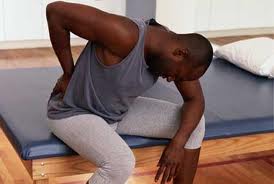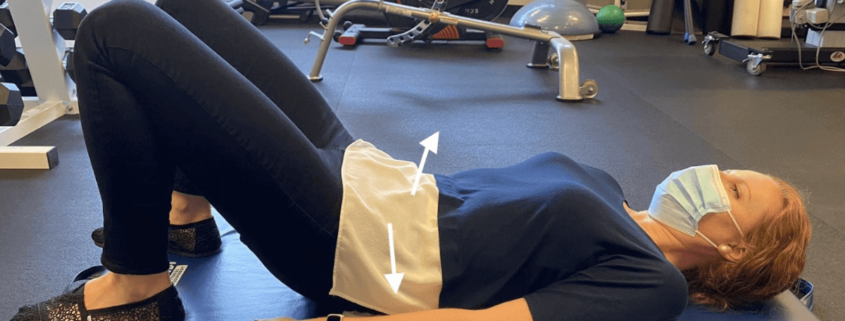Tag Archive for: Acute Back Pain
 According to the Canadian Physiotherapy Association, four out of five Canadians experience at least one episode of low back pain at some point in their life.
According to the Canadian Physiotherapy Association, four out of five Canadians experience at least one episode of low back pain at some point in their life.
Physiotherapists focus on exercise, mechanics and posture, through customized treatments that work to increase your flexibility, strength, and endurance. Physiotherapists are effective in helping to reduce acute and chronic pain. There are three main types of back pain.
Localized pain is felt in the lower back and is restricted to a particular area on the body.
Radiating pain occurs when there is pain in the back and pain down the leg or foot, and is a sign that the nerve or nerve root is under pressure from either an injury or inflammation.
Referred pain is felt not only at the injured site, but also on different body areas, which is due to the fact that nerve signals from several areas of the body share the same nerve pathway leading to the spinal cord and brain.
Physiotherapists are skilled in manual therapy using precise hands-on techniques to relieve stiffness and improve movement of the joints and muscles. They incorporate movement exercises (Active physical therapy)that help restore motion and decrease radiating or referred pain; as well as progressive strengthening exercises that focus on increasing muscle strength, and function, while helping to increase core stability and endurance.
The physiotherapist may also use Passive physical therapy (modalities) including heat, ultrasound, eToims, Shockwave therapy, spinal decompression, class IV K-Laser therapy and trigger point dry needling, also referred to as intramuscular stimulation (IMS).
Health Link BC offers some helpful information on the different types of exercises you should try, depending on your symptoms:
Exercises to try if your back pain is eased by standing or lying down:
Alternate arm and leg / Backward bend / Hip flexor stretch / Press-up / Relax and rest
Exercises to try if your back pain is eased by sitting down:
Double knee-to-chest / Piriformis stretch / Single knee-to-chest
Exercises to try when no position eases your back pain:
Cat-camel / Curl-ups /Front plank /Hamstring stretch / Pelvic tilt / Walking
As with any medical advise, please contact your health care practitioner before starting any treatment or exercise regime.
 A healthy back is straight, moves easily and is free of pain. The most common area for chronic back pain is the lower back; also called the lumbar spine.
A healthy back is straight, moves easily and is free of pain. The most common area for chronic back pain is the lower back; also called the lumbar spine.
Back pain is defined as either acute or chronic. Practitioners diagnose low back pain as acute if it lasts less than a month and is not caused by serious medical conditions. If the pain persists, it is considered chronic back pain. Almost 20 million (2 in 3) Canadians will have at least one episode of back pain in their lifetime.
Warning Signs of Chronic Back Pain?
- If the pain lasts longer than month.
- The pain can be anywhere in the back. It can be in one area only or spread across a wide area.
- Your back might be stiff and the muscles swollen. This combination of pain, stiffness and swelling is called inflammation.
- Some injuries will cause muscles spasms in the back, and pain or weakness in a leg.
Back pain can develop anywhere from the neck to the lower spine. The pain can be localized or spread across a wide area and radiate from a central point. Muscle spasms may occur at the site of the pain. Some people also get pain or weakness in a leg as a result of back injury.
What causes Chronic Back Pain?
- Poor posture is the most common cause of back pain.
- Injury due to lifting heavy objects is also a frequent cause of back pain.
- Being overweight and not exercising enough can increase your risk of back injury.
- If your back is weak you can get back pain when you get upset or feel stressed.
- Some types of arthritis can cause chronic back pain.
How to prevent Chronic Back Pain
- When you lift a heavy item keep it as close to your body as possible. Keep your back straight and use your legs to do the lifting.
- Use helpful devices such as a cart to carry your grocery bags.
- Maintain a healthy weight to avoid putting extra stress on your joints.
- Be aware of your posture
- Wear shoes that support your feet; this will help keep your back and legs straight.
- Sleep on a firm mattress and support your neck properly with pillows.
Disciplines that treat Chronic Back Pain – Acupuncture | Chiropractic | Massage | Physiotherapy
Treatments for Chronic Back Pain – eToims | Laser | Spinal Decompression | Shockwave Therapy
News & Events
- The Benefits of Shockwave Therapy Treatments February 28, 2023
- Piriformis Syndrome: A Real Pain in the Butt January 31, 2023
- Searching for a Personal Trainer in Victoria to Help You Achieve Your Goals? December 31, 2022
- Are Winter Blues + Holiday Stress Making You Feel Grinchy? November 28, 2022
Diversified Health Clinic
| Thursday | 8 a.m. – 6 p.m. |
| Friday | 8 a.m. – 6 p.m. |
| Saturday | 8 a.m. – 5 p.m. |
| Sunday | Closed |
| Monday | 8 a.m. – 5 p.m. |
| Tuesday | 8 a.m. – 6 p.m. |
| Wedensday | 8 a.m. – 6 p.m. |


